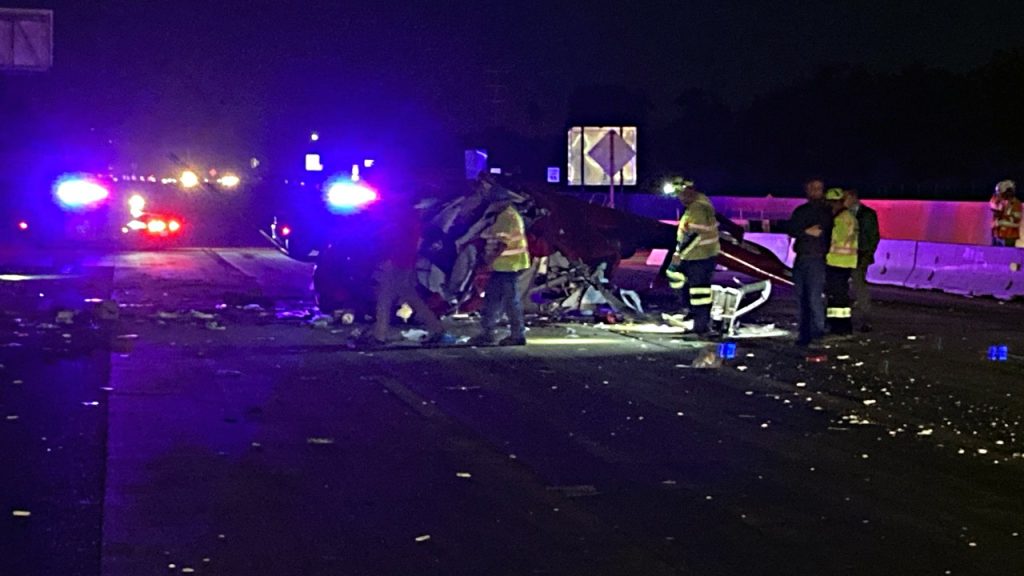Helicopter Crash in Sacramento Leaves Multiple Injured and Highway Closed
In the early evening hours of Monday, a shocking helicopter crash brought Highway 50 in East Sacramento to a standstill, leaving multiple survivors injured and prompting an immediate emergency response. The crash occurred just after 7 p.m., forcing authorities to shut down eastbound lanes as first responders rushed to the scene. While details about the specific type of aircraft remain limited, flight radar data identified the helicopter’s tail number as A4E489. The unexpected aviation disaster created significant traffic congestion in both directions, with traffic cameras capturing the resulting backup as emergency personnel worked diligently at the crash site. This sudden incident serves as a stark reminder of how quickly ordinary evenings can transform into moments of crisis.
The human impact of this crash quickly became apparent, as Mayor Kevin McCarty’s office confirmed there were survivors, all of whom were transported to local hospitals for treatment. Though officials have not yet disclosed the exact number of people involved or the severity of their injuries, the immediate response from emergency services demonstrated the community’s readiness to handle such unexpected disasters. The Sacramento Fire Department, California Highway Patrol, and other emergency units coordinated their efforts to secure the area and provide critical assistance to those affected. For the injured survivors and their families, what began as a routine Monday evening suddenly became a life-altering event, highlighting the fragility of daily life and the importance of emergency preparedness in urban settings.
Sacramento City Councilmember Lisa Kaplan offered a unique perspective on the aftermath, having observed the crash site from above while flying with the Sacramento County Sheriff’s Office helicopter unit. Her sobering statement on social media captured the emotional weight of witnessing such an incident: “Every day is not a given. We were one of the first to show up at the helicopter crash from above. It was sobering. I pray for all in the crash.” Her words resonated with many community members, underscoring both the dangers faced by those who serve the public from the air and the profound impact such incidents have on first responders and officials who witness them firsthand. The councilmember’s message served as a poignant reminder of the risks taken daily by pilots and emergency personnel who serve the community.
Perhaps most touching amid this emergency was the immediate response from ordinary citizens who stopped to help before additional professional help could arrive. Mayor McCarty’s office described the crash as “harrowing” while specifically praising approximately 15 bystanders who assisted the Sacramento Fire Department until more units arrived on scene. This display of community solidarity during crisis—strangers stepping forward to help other strangers in a moment of urgent need—exemplifies the best aspects of human nature in emergency situations. These unnamed Good Samaritans, alongside the trained emergency personnel, created a crucial network of support during those first critical moments following the crash, potentially making life-saving differences for those involved.
The practical impact of the crash extended well beyond those directly involved, affecting thousands of Sacramento residents and commuters. Authorities urged the public to avoid the area entirely, warning that cleanup operations and investigation procedures could take several hours, significantly disrupting traffic patterns throughout East Sacramento. The ripple effects of such incidents highlight the interconnectedness of urban infrastructure—how a single event on one highway can quickly cascade into widespread disruption across multiple neighborhoods and routes. For residents caught in the resulting traffic or forced to find alternative paths home, the crash became an unexpected interruption to their daily routines, a reminder of how quickly normal patterns of life can be disrupted by unforeseen emergencies.
As night fell over Sacramento, many questions about the crash remained unanswered. Investigators had not yet determined what caused the helicopter to go down on a busy highway during evening traffic—whether mechanical failure, weather conditions, pilot error, or some other factor contributed to the accident. The Federal Aviation Administration and other investigative bodies will undoubtedly conduct thorough examinations in the coming days and weeks to understand exactly what transpired and how similar incidents might be prevented in the future. For now, as the community awaits these answers, the focus remains on supporting those injured in the crash and restoring normalcy to the affected area. This incident joins a concerning pattern of recent helicopter accidents across the country, including crashes in Washington state and Minnesota, raising broader questions about helicopter safety and regulation nationwide.


